Kunisaki Peninsula is located in the northeastern part of Oita Prefecture in Kyushu, Japan. On this round-shaped peninsula, there are a lot of attractive places. Because it is not easy to access, its towns, shrines, and temples have retained their quiet and original atmosphere. Let’s find out more about the off-the-beaten-path gem in this travel guide!
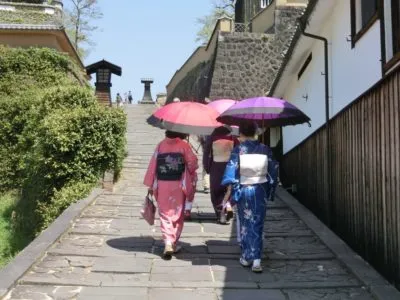
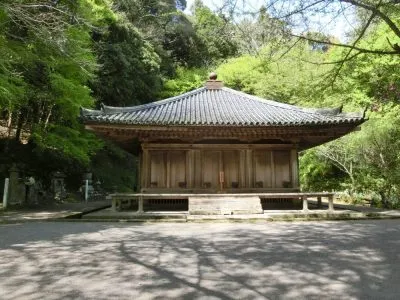
Kitsuki
Kitsuki developed as a castle town of the Kitsuki domain under feudal lord Matsudaira. The city has an interesting shape as it looks like a V-shaped valley. In the north and south, there are hills, and the middle of the town is on lower ground. Samurai used to live in the upper area while the commoners lived in the lower area. The upper area and lower area are connected by the long steps, which makes for a unique townscape. Some of the samurai residences are well preserved and you can visit some of them.
At the eastern end of the town, you will find Kitsuki Castle. It is surrounded by a natural fortress; there is a river in the north and a bay in the east. This made the castle easy to defend. The castle you see today is a reconstruction from 1970. You can learn about local history and enjoy a nice view from the top floor. The entrance fee is only 300 yen.
Fukiji Temple
Fukiji Temple is a Buddhist temple of the Tendai sect. The temple was founded in the 8the century during the Heian period. It is the existing oldest wooden construction in Kyushu Island, and it is very rare to see the architecture style from the Heian period in regions other than Kansai.
It is said a monk called Ninmon made 28 temples and 69,000 statues of Buddha in the Kunisaki Peninsula. Ninmon was believed to be an incarnation of the god of the Usa Hachiman Shrine. The statue of Buddha in the main hall is a national treasure. The painting on the wall shows the Buddhist paradise.
Futagoji Temple
Futagoji Temple is located on the hillside of Mt. Futago, 721 meter-high, the highest peak in the Kunisaki Peninsula. Mt. Futago erupted more than 1 million years ago and it created the round-shaped peninsula with its deposited materials.
This Tendai sect Buddhist temple has served as the main temple of mountain worship on the Kunisaki Peninsula. The pair of 230 cm tall Nio statues at the entrance of the temple are some of the biggest stone statues. The view from the steps of this entrance looking up the temple gate surrounded by the old trees is very attractive.
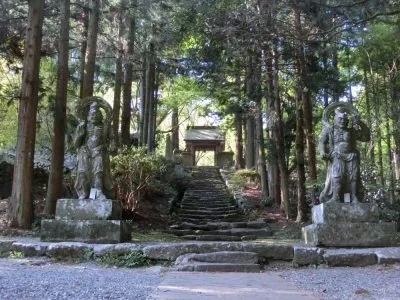
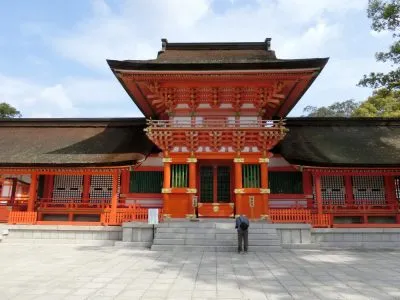
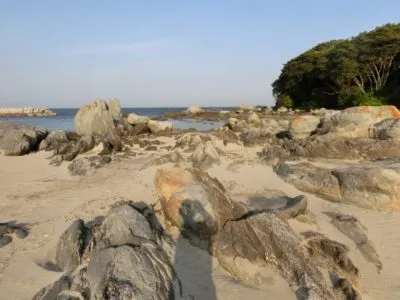
Usa Jingu Shrine
The Usa Jingu, or Usa Hachiman Shrine, is located at the entrance of the Kunisaki Peninsula. It was founded in the 8th century and it is one of the oldest Shinto shrines in Japan. Usa Jingu is the headquarter of all the 44,000 Hachiman shrines in Japan. History says that the spirit of 15th Emperor Ojin appeared here in the 6th century after which people made the shrine at the site.
As the shrine is located on the top of the hill you have to walk up a lot of steps. By walking through the main approach surrounded by the old trees, you will feel a sense of holiness. If you are not in a condition good enough to walk up the steps, there is a cable car that you can use for free.
They enshrine three ‘kami’ in the main hall. The first one is Hachiman or Emperor Ojin, the second one is Himeno-Okami, an important goddess in the Kyushu region. And the third one is Empress Jingu who was the mother of Emperor Ojin.
The Kunisaki Coastline
Kunisaki Peninsula has a round shape. It was created by the eruption of Mt. Futago located in the middle of the peninsula. The deposited materials created this peninsula. Because of this, there is an intricate coat line. Many visitors enjoy driving along the beautiful coast.
Your Japan Tour
As seasoned Japan experts, we create perfect Japan package tours including destinations like Kunisaki. Check out our group tours and private tours, or contact us to start planning your unforgettable holiday to this fascinating country full of once-in-a-lifetime experiences, culture, history, nature, and delicious food!